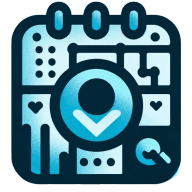6 Tips for Crafting Engaging and Informative Event Agendas
Discover the secrets to creating compelling event agendas that captivate and educate your audience. This article delves into practical strategies backed by industry experts to balance interactive sessions with informative content. Embrace these insights to transform your events into engaging experiences that participants will value.
- Let Audience Set the Agenda
- Balance Interactive Elements with Content
- Maintain Flexible Structures
- Set a Clear Agenda
- Implement Structured Agendas
- Balance Content with Interactive Sessions
Let Audience Set the Agenda
My approach is simple: let the audience set the agenda. At a recent climate summit hybrid event, we flipped the traditional format with a "reverse Q&A."
Instead of a speaker-dictated schedule, we asked attendees to submit questions beforehand using a basic tool like Google Forms. This meant that when sessions began, speakers tackled issues the audience actually cared about, such as sustainable cities and even tough topics like gentrification.
The result was immediate engagement, with a big increase in live chat participation. When people see their own questions driving the conversation, they feel more involved and invested. My tip? Ditch the assumption that you know what your audience needs. Instead, give them the reins and let their interests guide the event.

Balance Interactive Elements with Content
I try to balance interactive elements with worthwhile content when planning an event schedule. I prioritize sessions that are clear and succinct, but I also make sure there is enough variation to sustain energy levels throughout the day. Things remain lively by alternating presentations with workshops, networking opportunities, and Q&A sessions. Including interactive elements during talks, such as live polls or audience participation segments, is a crucial strategy for increasing attendee engagement. Attendees are encouraged to pay attention and feel involved in the discussion as a result. We employed live polls to encourage conversation and customize the content to attendees' interests at a recent event. This increased engagement and gave the impression that the event was more suited to their needs.

Maintain Flexible Structures
I create event schedules by maintaining flexible structures that complement organizational elements according to what audience groups need most. The session planning focuses on providing various learning activities while carefully picking timing periods to keep participants energized. Live polls and Q&A sessions as well as networking breaks provide a powerful way of maximizing attendee involvement by keeping them actively engaged during the event. The involvement of participants makes the event more lively and builds strong networking bonds between participants.

Set a Clear Agenda
Set a clear agenda in advance and stick to it. This ensures that the meeting stays focused, efficient, and productive. To facilitate engaging virtual meetings, I use the strategy of interactive collaboration. This can include using polls, breakout rooms, or Q&A sessions to keep participants involved. For example, I may ask questions during meetings or use collaborative tools like Miro or Google Docs for real-time brainstorming. These tactics encourage active participation and prevent the meeting from becoming a passive experience.

Implement Structured Agendas
Drawing from my experience at spectup and my time at companies like BMW and Deloitte, I've seen how meeting agendas can make or break team productivity. At spectup, we actually developed our meeting framework after I noticed our early team meetings were running over time and lacking clear outcomes. When we started implementing structured agendas, our average meeting time dropped from 60 to 35 minutes, with better results.
One particularly memorable transformation happened during a fundraising preparation project with a fintech startup. Their initial investor meetings were scattered and inefficient, often missing key discussion points. After we helped them implement a clear agenda structure - starting with company vision, moving to market opportunity, then financials, and ending with specific ask - they secured meetings with three major VCs within two weeks.
My non-negotiable elements for any agenda include clear time allocations for each topic, specific desired outcomes listed at the top, and designated decision points clearly marked. I also insist on including a "next steps" section at the end - something I learned during my time at N26, where accountability was crucial. Every agenda must be shared at least 24 hours before the meeting, giving participants time to prepare and contribute meaningfully.
I always tell our startup clients that an agenda isn't just a list of topics - it's a strategic tool that shows respect for everyone's time and ensures meetings drive real business outcomes. At spectup, we've found that startups who master this aspect of business operations typically demonstrate better organizational maturity to potential investors.

Balance Content with Interactive Sessions
My approach to creating an engaging and informative event agenda is to balance informative content with interactive sessions. I ensure that the schedule includes a mix of keynote speakers, panel discussions, and workshops to keep the energy high and attendees engaged throughout the event. Each session is designed to be clear, concise, and valuable, focusing on key takeaways.
One tip for maximizing attendee engagement is to incorporate interactive elements like live Q&A sessions, polls, or audience participation activities during presentations. This keeps attendees involved and encourages them to stay actively engaged. For example, instead of just a passive presentation, incorporating polls or breakout discussions allows attendees to interact with speakers and each other, making the event feel more dynamic and participatory. This approach not only keeps people engaged but also allows them to apply what they've learned in real-time, boosting both value and retention.


